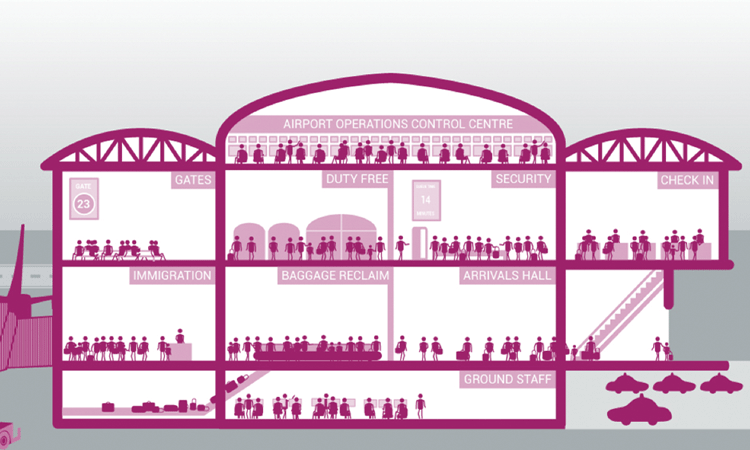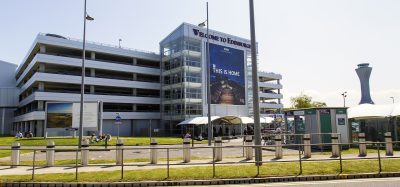Untapped potential in passenger flow technology & business intelligence
Posted: 21 January 2014 | International Airport Review | No comments yet
Passenger flow technology and business intelligence is not a new concept but it is a technology which is coming of age. International Airport Review looks at how airports are just beginning to tap in to its potential.


Understanding passenger flow around airports was, for a long time, a bit of a dark art. Everyone recognised that knowing where the bottlenecks were would be useful, but actually finding an efficient way to do it beyond complex terminal simulation or a simple person with a clipboard, proved difficult.
Even for the most robust simulations, these were often developed prior to the construction of the airport and certainly before the massive variance in passenger demographics we see today. From the passengers to the airlines themselves, the profile of those using airport facilities has changed significantly, along with the industry itself.
Passenger numbers have risen dramatically over the last few decades with the rise of the low cost carrier bringing air travel to the masses. Through the 1990s we had the revolution of low cost, budget operators who not only took on many holiday routes, but also offered a lot of competition to the established operators serving the business market. Today, we have new countries joining the EU and new destinations as a result, not to mention the increasing capacity of our long-haul airliners and traditional hub airports being overtaken by ambitious Middle East counterparts.
Subsequently, airports have had to adapt to ever-increasing passenger numbers, which has led to repeated extensions, upgrades and revision of terminal facilities.
We now stand at an important crossroads: The airport of today is being driven from the passenger experience perspective, and is certainly a different proposition with every asset, outlet and square inch of space designed to work harder, particularly from a revenue perspective. Competition is fierce, especially in the EU where provincial airports have become business hubs with low cost airlines. And while the belt might have been tightened on passenger budgets, their expectation of service has not diminished.
Influential factors in this are two-fold but essentially come back to the passenger experience. Practical or logistical challenges, such as linking airside and terminal resources, sit side-by-side with considering the impact on revenue streams such as retail or food outlets, connecting transport, car parking and advertising. This is why business intelligence, particularly around the passenger process and key touch points, has become so important for delivering this next generation airport where operators can get an accurate picture of every face of their operation in real-time.
Passenger experience is created by the various stakeholders such as airlines, security, customs and retail working effectively in tandem. The key to its improvement is the collaboration between them and the efficiency of the processes that link them. In this situation, the use of business intelligence is essential but too often key themes and ideas that are critical to successful delivery are poorly defined, understood and implemented in practice; usually as a result of the inevitable fog of data.
This is where passenger flow measurement and tracking has shown real benefits. In 2011 Ofcom estimated that a quarter of the UK population had a smartphone. Today, that figure is more like 75 per cent in many regions and most are in use for email, web and social media as much as they are phone calls. When mobile phones were identified as a way to anonymously monitor the location of passengers inside the airport, Bluetooth was the only technology widely available to track, which meant the numbers that could be observed were limited.
With Wi-Fi now omnipresent at all airports, another contribution from this quest for an optimum passenger experience, there has been a rise not only in the volume of data that can be tracked but also the quality of that data.
Airports are now using this information to make informed decisions that not only helps passengers get to their gates on time, but also positively impacts the bottom line. Passenger flow technology is no longer a ‘nice to have’ for airports. It is a critical part of any true passenger experience initiative. Platforms like Lockheed Martin’s Chroma Suite link both terminal and airside operations, and use passenger information to do it. And airports such as Dubai, Toronto, Edinburgh, Oslo, Geneva and Milan are using this business intelligence to create a picture of their passengers’ habits, particularly around retail.


From kerb to cloud, efficient passenger flow should not be underestimated. Photo courtesy of Lockheed Martin
At a typical airport, two-thirds of purchases take place within 60 minutes of boarding, with approximately half taking place during the penultimate 30 minute period. Therefore, the emphasis should be on encouraging passengers to shop (and spend) at a more relaxed pace. This can be achieved by targeted advertising and optimised retail layout e.g. prioritising the products that are the typical big sellers for that airline, route, season or passenger demographic.
Non-aeronautical revenue is key when it comes to determining the profitability of an airport. For the most part, aeronautical activities, and their subsequent revenues, tend to be fixed and provide little scope for immediate, short-term growth. Airports must be proactive in generating the maximum return from their non-aeronautical operations.
Retail contributes approximately 40 to 50 per cent of typical airport revenue, offering up the most extensive possibilities for growth. It is widely acknowledged that an increased airside dwell time will lead to increased retail spend – so placing a greater emphasis on the role of the passenger in the overall process is imperative.
There is also an opportunity to have two-way conversations with passengers. By letting themselves be monitored and feeding back on their experience to airport management, rewards such as parking discounts, Wi-Fi or retail offers could be distributed.
Airports such as Copenhagen and Oslo are ahead of the curve on customer engagement. The next step for mobile passenger information will be to provide personalised journey times and directions across the airport using increasingly location-aware and passenger-aware services. Using innovative technologies, airports will be able to provide passengers with their gate number, the expected walk time to the gate, retail discounts en-route and the ability to purchase lounge access via their smartphone.
Indeed, Middle Eastern hubs such as Dubai and Doha, and European leaders Oslo and Helsinki are no longer focused simply on the airport processes. Their focus has shifted to providing a differentiated experience, enabled by a new type of intelligent operational platform. This platform needs to be fully integrated, open to all stakeholders, and encourage data sharing – not just between airport, airline and ground handlers but the passenger and key stakeholders across the wider network.
Join our free webinar: Beyond silos: How ecosystem thinking elevates the airport experience
In today’s complex aviation landscape, airports are moving beyond siloed operations to embrace a new era of collaboration. This webinar focuses on how leading airports are using ecosystem thinking to adapt, personalize, and continuously improve every touchpoint, boosting both passenger satisfaction and non-aeronautical revenue.
Date: 13 Nov | Time: 10:00 GMT
REGISTER NOW TO SECURE YOUR SPOT
Can’t attend live? No worries – register to receive the recording post-event.


















